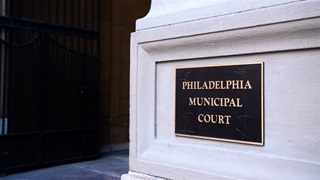Pew Disappointed With Administration’s Decision to Revisit Widely Lauded Plan for California Desert
Broad public support marked original plan, which balances protections and creation of renewable energy
WASHINGTON—The Pew Charitable Trusts expressed disappointment today with the Bureau of Land Management’s decision to reopen California’s Desert Renewable Energy Conservation Plan (DRECP), which lays out a blueprint for balancing renewable energy development with conservation on our nation’s public lands. The bureau also announced its intention to cancel its work to prohibit industrial mining in California Desert Conservation Lands.
Released in September 2016, the DRECP is a major part of California’s plan to generate 50 percent of its power from renewable sources by 2026. The management plan would permanently protect significant areas of public lands in the California desert—including the Silurian Valley, Mayan Peak, and Chuckwalla Bench. The plan also identified certain areas of public lands in the desert that would be available for potential renewable energy development.
John Gilroy, who directs The Pew Charitable Trusts’ U.S. public lands program, issued the following statement:
“We are disappointed with the administration's decision to open up the Desert Renewable Energy Conservation Plan (DRECP) to potential changes.
“The DRECP strikes a balance between large-scale renewable energy development and protecting desert lands for recreation and wildlife across the fragile California desert. The plan dedicates an area larger than Los Angeles for renewable energy projects—which California energy regulators say is ample for meeting the state’s goals.
“This plan was the culmination of more than seven years of collaboration between federal, local, and state government, energy producers, conservationists, and recreation enthusiasts, and generated more than 16,000 comments. Support for the final plan was broad, and came from the Department of the Interior, the California Department of Fish and Wildlife, and the state of California—which was a major stakeholder in the process.
“The plan, which also safeguarded these lands from mining for future generations, was praised by state and federal agencies as a major success in balancing the need for renewable energy production with recreation and conservation objectives in the California Desert Conservation Area.
“We urge the Department of the Interior to continue to collaborate closely with the state of California on the plan development, to show restraint in making any changes to DRECP, and to maintain the plan’s science-based and balanced solutions.”
The Pew Charitable Trusts is driven by the power of knowledge to solve today’s most challenging problems. Learn more at www.pewtrusts.org.











